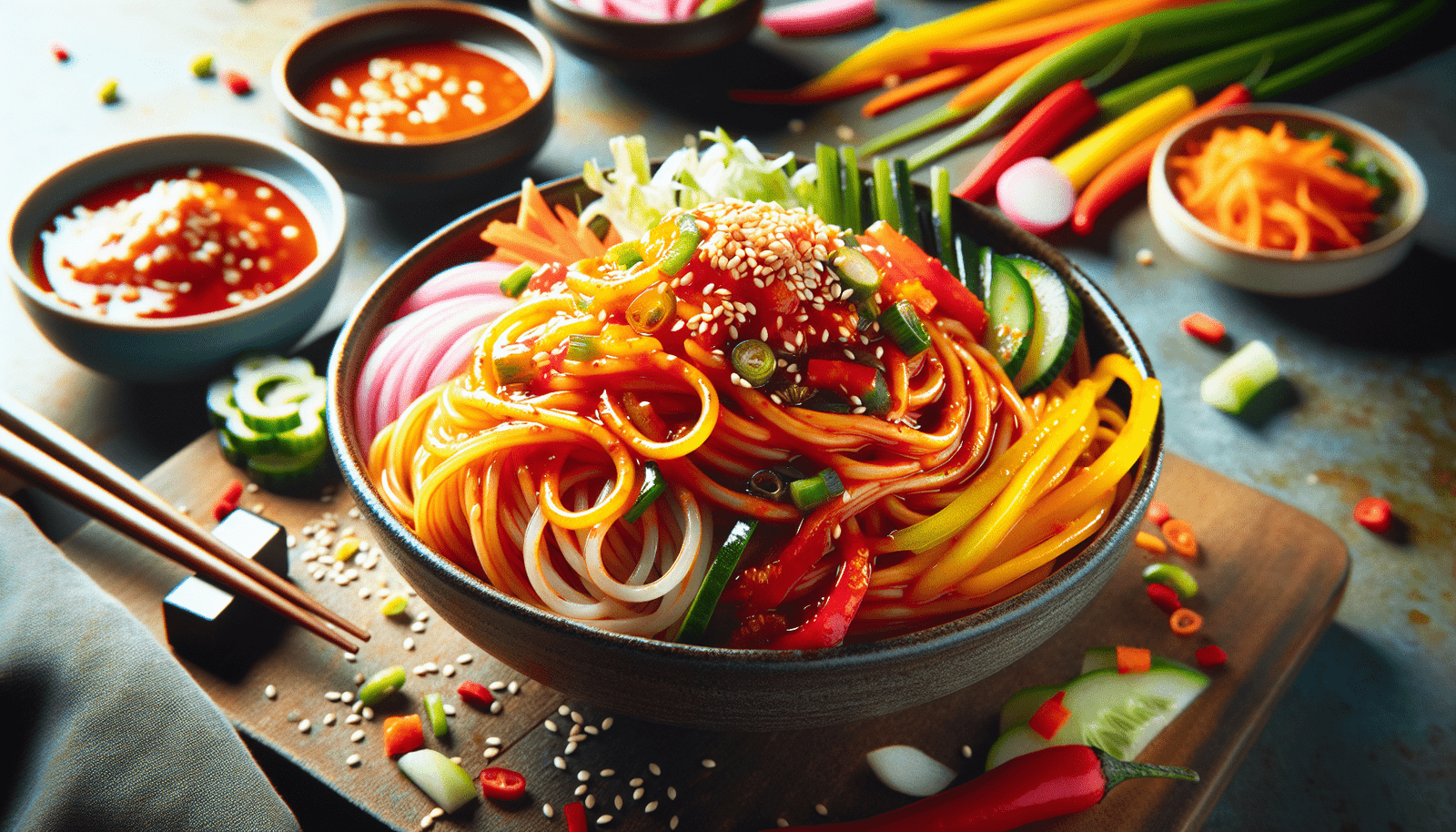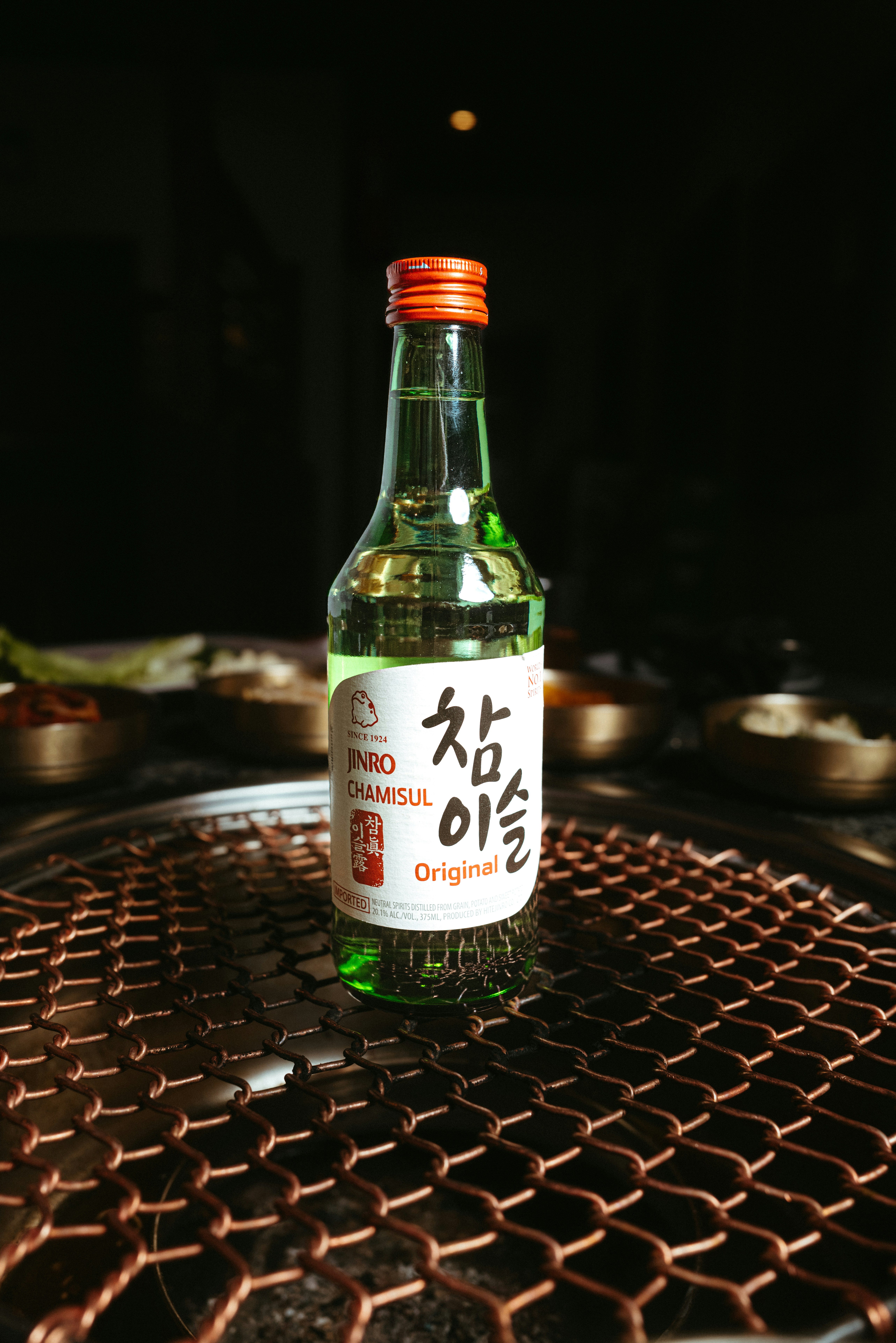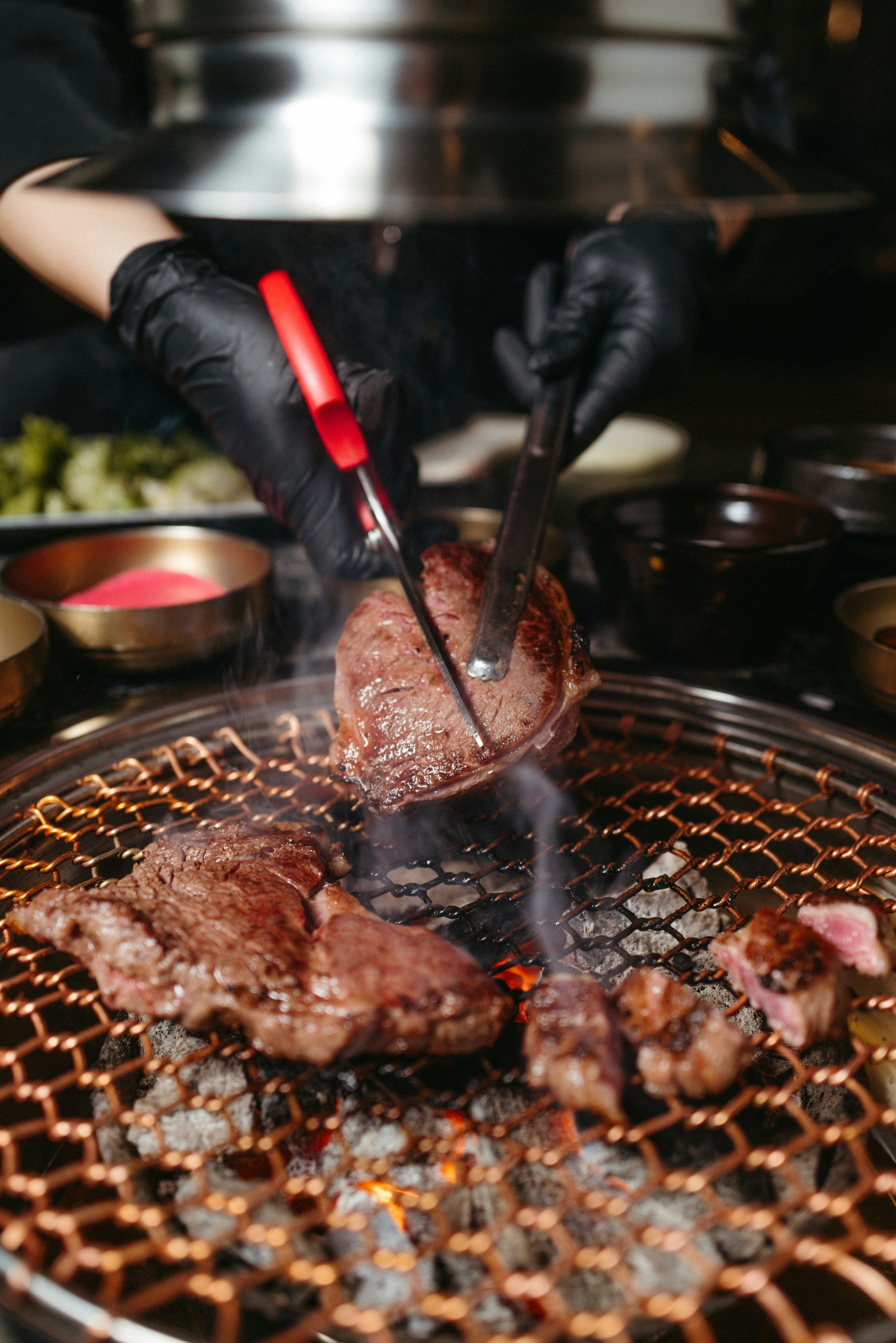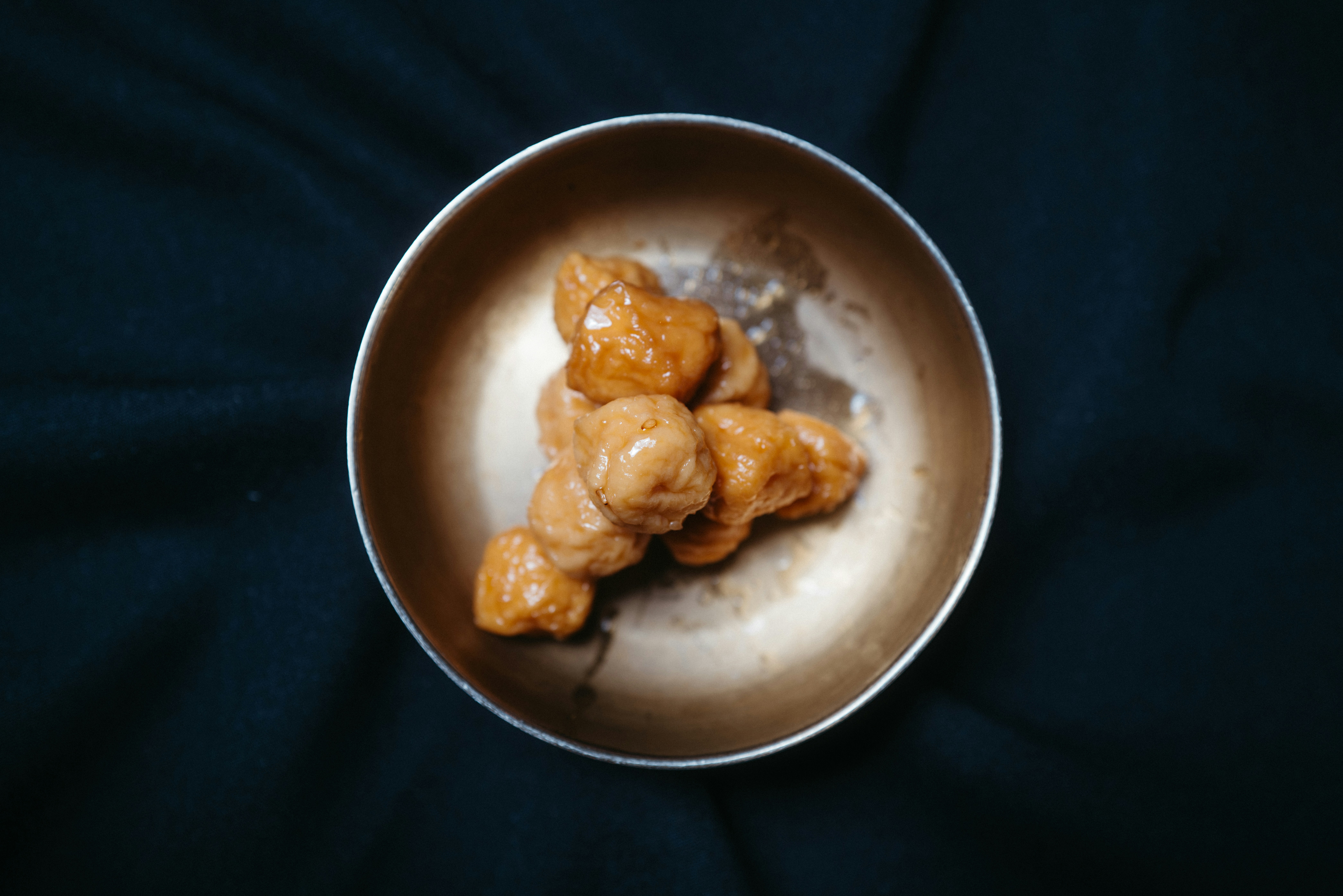If you’re a fan of Korean cuisine or simply enjoy trying new recipes, you might be familiar with the mouthwatering dish known as bibim guksu. This traditional Korean dish features a delightful combination of chewy noodles, fresh vegetables, and a flavorful sauce that is sure to tantalize your taste buds. Are you ready to elevate your homemade bibim guksu game? In this article, we’ll uncover some valuable tips and tricks to help you create the perfect bowl of this beloved Korean delicacy right in your own kitchen. Prepare your appetite because we’re about to embark on a culinary adventure like no other!
Choosing the right ingredients
When making the perfect bowl of traditional Korean bibim guksu, it is important to start with the right ingredients. Let’s take a look at the key components that make up this delicious dish.
Soba noodles
The first essential ingredient for bibim guksu is soba noodles. These thin, buckwheat noodles have a slightly nutty flavor and a satisfying chewy texture. Look for high-quality noodles that are free from any additives or preservatives for the best results.
Vegetables
In bibim guksu, a variety of colorful and crunchy vegetables are used to add freshness and texture to the dish. Common vegetables used include thinly sliced cucumbers, julienned carrots, and thinly shredded lettuce. However, feel free to get creative and add other vegetables like bell peppers or radishes to customize your bowl.
Protein
While bibim guksu is typically enjoyed as a vegetarian dish, it is also common to add some protein for extra flavor and satiety. Thinly sliced beef, cooked chicken, boiled eggs, or tofu/tempeh are popular protein options that can be added to the dish. Choose the protein that suits your preference or dietary restrictions.
Sauce
The sauce is what brings all the flavors of bibim guksu together. A traditional sauce for bibim guksu is made with gochujang paste, sesame oil, soy sauce, sugar or honey, and vinegar. The gochujang paste adds a spicy kick, while the sesame oil and soy sauce provide depth of flavor. The sugar or honey balances out the heat, and the vinegar adds a tangy note. Adjust the proportions of these ingredients according to your taste preference.
Cooking the soba noodles
Now that you have gathered all the necessary ingredients, it’s time to start cooking! Let’s begin with preparing the soba noodles.
Boiling the water
Fill a large pot with water and bring it to a boil. It is important to use a generous amount of water to prevent the noodles from sticking together.
Adding the noodles
Once the water is boiling, carefully add the soba noodles. Give them a gentle stir to ensure they are separated.
Cooking time
Cook the noodles according to the package instructions. Soba noodles usually take around 5-7 minutes to cook, but it’s essential to follow the package instructions as cooking times may vary.
Draining and rinsing
Once the noodles are cooked, drain them in a colander and rinse under cold water to remove any excess starch. This will help prevent the noodles from becoming mushy and sticky. Set the noodles aside while you prepare the other components of the dish.
Preparing the vegetables
The vibrant and colorful vegetables in bibim guksu add freshness and crunch to the dish. Here’s how you can prepare them.
Slicing and julienning
Thinly slice the cucumbers, julienne the carrots, and shred the lettuce to create the perfect bite-sized pieces.
Blanching or steaming
To enhance the texture and bring out the vibrant colors of the vegetables, you have the option to blanch or steam them briefly. Blanching involves dipping the vegetables in boiling water for a short time, while steaming involves using a steamer basket. Both methods will help soften the vegetables slightly and make them more vibrant.
Refreshing in cold water
After blanching or steaming the vegetables, it is essential to refresh them in cold water to halt the cooking process and preserve their vibrant colors. This step will also ensure that the vegetables retain their crispness.
Draining excess moisture
Before adding the vegetables to the dish, make sure to drain any excess moisture by gently patting them dry with a kitchen towel or using a salad spinner. This will prevent the dish from becoming watery.
Selecting the protein
Adding protein to bibim guksu is optional, but it can elevate the dish and make it more satisfying. Here are some protein options to choose from.
Thinly sliced beef
If you prefer a meaty option, thinly sliced beef is a great choice. Marinate the beef with soy sauce, garlic, and sesame oil for added flavor before cooking it in a pan or grilling it until it is tender and cooked to your liking.
Cooked chicken
Leftover cooked chicken can also be a delicious addition to bibim guksu. Simply shred or slice the chicken and toss it with a bit of soy sauce and sesame oil for added flavor.
Boiled eggs
Boiled eggs add a creamy and protein-rich element to the dish. You can cook the eggs to your preferred doneness and slice them before adding them to the bibim guksu.
Tofu or tempeh
For a vegetarian or vegan option, tofu or tempeh can be used as a protein source. Cube the tofu or tempeh and marinate it in a mixture of soy sauce and sesame oil before pan-frying until golden brown. This will give the protein a flavorful and crispy exterior.
Making the sauce
The sauce is what ties all the ingredients together in bibim guksu. Here’s how you can make the perfect sauce.
Gochujang paste
Start by adding gochujang paste to a bowl. Gochujang is a fermented chili paste that adds a spicy and savory flavor to the dish. The amount of gochujang you use will depend on your spice tolerance, but generally, around 2-3 tablespoons should suffice.
Sesame oil
Next, add a generous drizzle of sesame oil to the bowl. Sesame oil adds a rich and nutty flavor to the sauce, enhancing the overall taste of the dish. Aim for approximately 1-2 tablespoons, depending on your preference.
Soy sauce
To add some salty and umami notes, pour in a tablespoon or two of soy sauce. This will help balance out the sweetness and spiciness of the other ingredients.
Sugar or honey
To balance out the heat of the gochujang and add a touch of sweetness, incorporate a teaspoon or two of sugar or honey. Adjust the amount according to your taste preference.
Vinegar
Lastly, add a splash of vinegar, preferably rice vinegar, to add a tangy element to the sauce. The vinegar will brighten up the flavors and cut through the richness of the other ingredients. Start with a teaspoon and adjust to your liking.
Mixing the ingredients
Now that all the components are ready, it’s time to mix everything together to create a flavorful and delicious bibim guksu.
Combining noodles and vegetables
Start by placing the cooked and drained soba noodles in a large mixing bowl. Add the blanched or steamed vegetables on top of the noodles.
Adding the protein
If you have chosen to include protein in your bibim guksu, add it to the mixing bowl as well. Whether it’s the thinly sliced beef, cooked chicken, boiled eggs, or tofu/tempeh, distribute it evenly throughout the bowl.
Pouring the sauce
Pour the prepared sauce over the noodles, vegetables, and protein. Make sure to distribute the sauce evenly for a balanced flavor in every bite.
Tossing thoroughly
Using tongs or chopsticks, toss all the ingredients together until they are well coated in the sauce and evenly combined. Make sure each noodle strand is coated, and the vegetables are integrated throughout.

Garnishing and serving
The final touches on bibim guksu come in the form of garnishes, adding extra flavor and visual appeal to the dish.
Chopped green onions
Sprinkle a handful of chopped green onions on top of the bibim guksu. Green onions add a fresh and slightly pungent flavor that complements the other ingredients.
Toasted sesame seeds
Toasted sesame seeds not only add a subtle crunch but also a rich nutty flavor to the dish. Sprinkle them over the bibim guksu to enhance its overall taste.
Sliced cucumber
For an extra refreshing element, thinly slice some cucumbers and arrange them on top of the dish. The cool and crisp cucumber will add a pleasant contrast to the other flavors.
Kimchi
If you enjoy the spicy and tangy flavors of kimchi, serve a small bowl of it alongside your bibim guksu. The combination of the two dishes will create a harmonious balance of flavors.
Adjusting the flavors
After assembling your bibim guksu, it’s essential to take a moment to taste the dish and adjust the flavors according to your preference.
Tasting the dish
Take a small portion of the bibim guksu and taste it. Pay attention to the levels of spiciness, sweetness, saltiness, and tanginess in the dish.
Adding more sauce
If you find the dish to be lacking in flavor, you can add more sauce to intensify the taste. Prepare a small amount of the sauce separately and gradually add it to the dish until it reaches your desired level of flavor.
Adjusting seasoning
If you feel that the dish needs more saltiness or sweetness, you can adjust the seasoning by adding a bit more soy sauce or sugar/honey. Be cautious not to add too much at once, as it can quickly overpower the other flavors.
Balancing sweet, salty, and spicy
The key to achieving the perfect bibim guksu is to find the right balance of sweet, salty, and spicy flavors. Take your time to experiment and adjust the ingredients until you find the balance that suits your taste buds.

Serving and storing
Now that you have perfected your bibim guksu, it’s time to serve and enjoy the dish. Here are some tips on serving and storing the leftovers.
Serving temperature
Bibim guksu is typically served cold or at room temperature. However, if you prefer a warm dish, you can briefly heat it in a microwave or gently warm it in a pan before serving.
Presentation techniques
When serving bibim guksu, consider arranging the noodles, vegetables, and protein in a visually appealing manner. A neat and attractive presentation can enhance the overall dining experience.
Leftover storage
If you have any leftovers, store them in an airtight container in the refrigerator. Be sure to keep the sauce separate from the other components to prevent the noodles from becoming soggy.
Reheating instructions
When reheating bibim guksu, it is best to heat it gently to avoid overcooking the noodles. You can either microwave it for a short time, stirring occasionally, or reheat it in a pan over low heat until warmed through.
Experimenting with variations
Once you have mastered the traditional bibim guksu recipe, feel free to experiment with variations to suit your taste preferences. Here are some ideas to get you started.
Adding different vegetables
While cucumbers and carrots are commonly used in bibim guksu, you can try adding other vegetables like bell peppers, radishes, or bean sprouts to customize your bowl. Just make sure to prepare and cook them accordingly before mixing them with the other ingredients.
Trying alternative noodles
Instead of soba noodles, you can explore different noodle options like udon noodles or rice noodles. Each type of noodle will bring its unique texture and flavor to the dish, allowing you to create a different experience each time.
Using alternative proteins
If you’re not a fan of beef or chicken, you can experiment with other proteins like shrimp, squid, or even grilled tofu. The choice of protein can significantly alter the taste and texture of the dish.
Creating fusion flavors
Don’t be afraid to infuse bibim guksu with flavors from other cuisines. Incorporate ingredients like Thai chili paste, lime juice, or fresh herbs to give your bibim guksu a creative twist. The possibilities are endless, so let your culinary creativity shine.
In conclusion, perfecting the art of making traditional Korean bibim guksu requires choosing the right ingredients, cooking the soba noodles to perfection, preparing the vegetables with care, selecting the ideal protein, making a flavorful sauce, and mixing everything together thoroughly. The garnishes and adjustments play an essential role in achieving the desired flavors, and serving and storing the dish correctly are crucial for enjoying it at its best. With a little experimentation, you can create your variations and fusion flavors, turning bibim guksu into a truly personalized culinary delight. So, gather your ingredients, follow these tips, and enjoy the deliciousness of traditional Korean bibim guksu!



